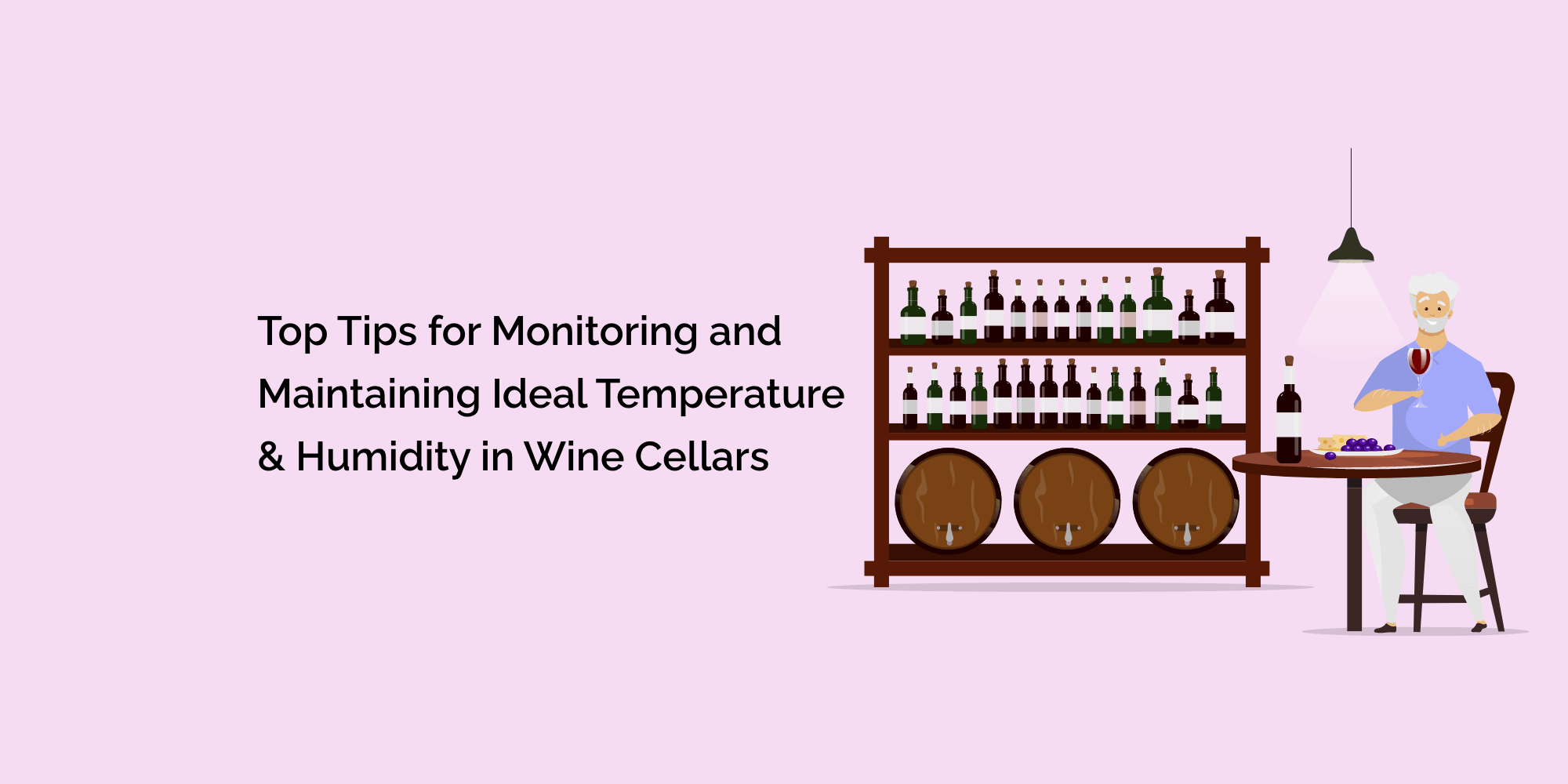Wine storage requires careful attention to temperature and humidity to ensure wine preservation and optimal aging. Proper temperature and humidity control in wine cellars play a vital role in maintaining your prized collection's quality, flavors, and aromas. This comprehensive blog post will explore the top tips for monitoring and maintaining the ideal temperature and humidity in wine cellars. By implementing these tips, wine enthusiasts can safeguard their wines and enhance the enjoyment of their vintages for years to come.
Understanding the Importance of Temperature Control:
- Temperature's Impact on Wine: Temperature directly affects the aging process and quality of wines. Fluctuations or extremes in temperature can lead to premature aging, oxidation, or spoilage. Consistent and moderate temperatures are essential for allowing wines to develop their unique characteristics and flavors.
- Ideal Temperature Range for Wine Storage: The ideal temperature range for wine storage typically falls between 50°F and 59°F (10°C and 15°C). Red wines generally benefit from slightly warmer temperatures (around 55°F or 13°C), while white wines and sparkling wines thrive at slightly cooler temperatures (around 50°F or 10°C).
- Tips for Temperature Control:
- Invest in a reliable thermometer or temperature monitoring system designed for wine cellars.
- Place temperature sensors in different locations to ensure accurate readings throughout the basement.
- Insulate the wine cellar properly to minimize heat exchange with the surrounding environment.
- Avoid direct sunlight or excessive heat sources near wine racks or storage areas.
- Consider climate control systems that provide precise temperature regulation.
Maintaining the Ideal Humidity Levels:
- Humidity's Role in Wine Preservation: Humidity levels are crucial for preserving wine quality. Proper humidity helps prevent cork drying, maintains the integrity of the bottle seal, and minimizes the risk of label damage or mold growth. It also ensures optimal aging conditions for wines.
- Ideal Humidity Range for Wine Cellars: The recommended humidity range for wine cellars is between 50% and 70%. This range provides sufficient moisture to keep corks in good condition without encouraging excessive mold growth. Humidity below 50% can result in dry pins, while levels above 70% can lead to mold issues.
Regular Monitoring and Maintenance:
- Monitoring Temperature and Humidity: Regular temperature and humidity monitoring is crucial for maintaining optimal cellar conditions. Check the readings on thermometers or monitoring systems regularly to ensure they are within the desired ranges. Consider logging and tracking the data to identify patterns or deviations over time.
- Calibration and Accuracy: Periodically calibrate your temperature and humidity monitoring devices to ensure accuracy. This can be done using professional calibration equipment or comparing readings with known accurate devices.
- Cellar Maintenance: Maintain cleanliness and proper organization within the wine cellar. Regularly inspect for any signs of leaks, mold, pests, or odors that could impact wine quality. Clean the basement to prevent any potential chemical reactions or off-putting odors that may affect the wine.
- Expert Consultation: If in doubt, consult wine cellar design experts or professional sommeliers with temperature and humidity control expertise. They can guide cellar design, equipment selection, and best practices tailored to your specific cellar and collection needs.
Avoiding Common Mistakes:
- Avoiding Rapid Temperature Changes: Minimize rapid temperature fluctuations, which can cause thermal shock and negatively impact wine quality. Gradual temperature changes are ideal for wine storage.
- Avoiding Excessive Humidity: While maintaining appropriate humidity is essential, excessive moisture can promote mold growth, label damage, or even affect the structural integrity of the cellar. Monitor and control humidity levels to ensure they remain within the recommended range.
- Avoiding Improper Air Circulation: Proper air circulation is essential to prevent stagnant air pockets and maintain consistent temperature and humidity levels. Ensure adequate ventilation within the cellar without excessive airflow that may disturb sediment or promote evaporation.
Certainly! Here are some frequently asked questions (FAQs) about monitoring and maintaining ideal temperature and humidity in wine cellars:
What is the ideal humidity range for wine cellars?
The recommended humidity range for wine cellars is between 50% and 70%. This range provides sufficient moisture to keep corks in good condition without encouraging excessive mold growth. Humidity below 50% can result in dry pins, while levels above 70% can lead to mold issues.
How can I monitor the temperature and humidity in my wine cellar?
You can use digital thermometers and hygrometers designed explicitly for wine storage to monitor temperature and humidity in your wine cellar. Place the sensors in different locations within the basement to ensure accurate readings. Some monitoring systems even offer remote access and alert features to notify you of significant fluctuations.
Conclusion:
Monitoring and maintaining ideal temperature and humidity in wine cellars are critical for preserving wines' quality, flavors, and aging potential. By understanding the importance of temperature control, maintaining appropriate humidity levels, regularly monitoring and maintaining cellar conditions, and avoiding common mistakes, wine enthusiasts can safeguard their collections and enhance the pleasure of their wines. Implementing these top tips will help create an optimal environment for wine storage, ensuring that each bottle reaches its full potential and provides a delightful drinking experience. Cheers to the art of wine preservation!








